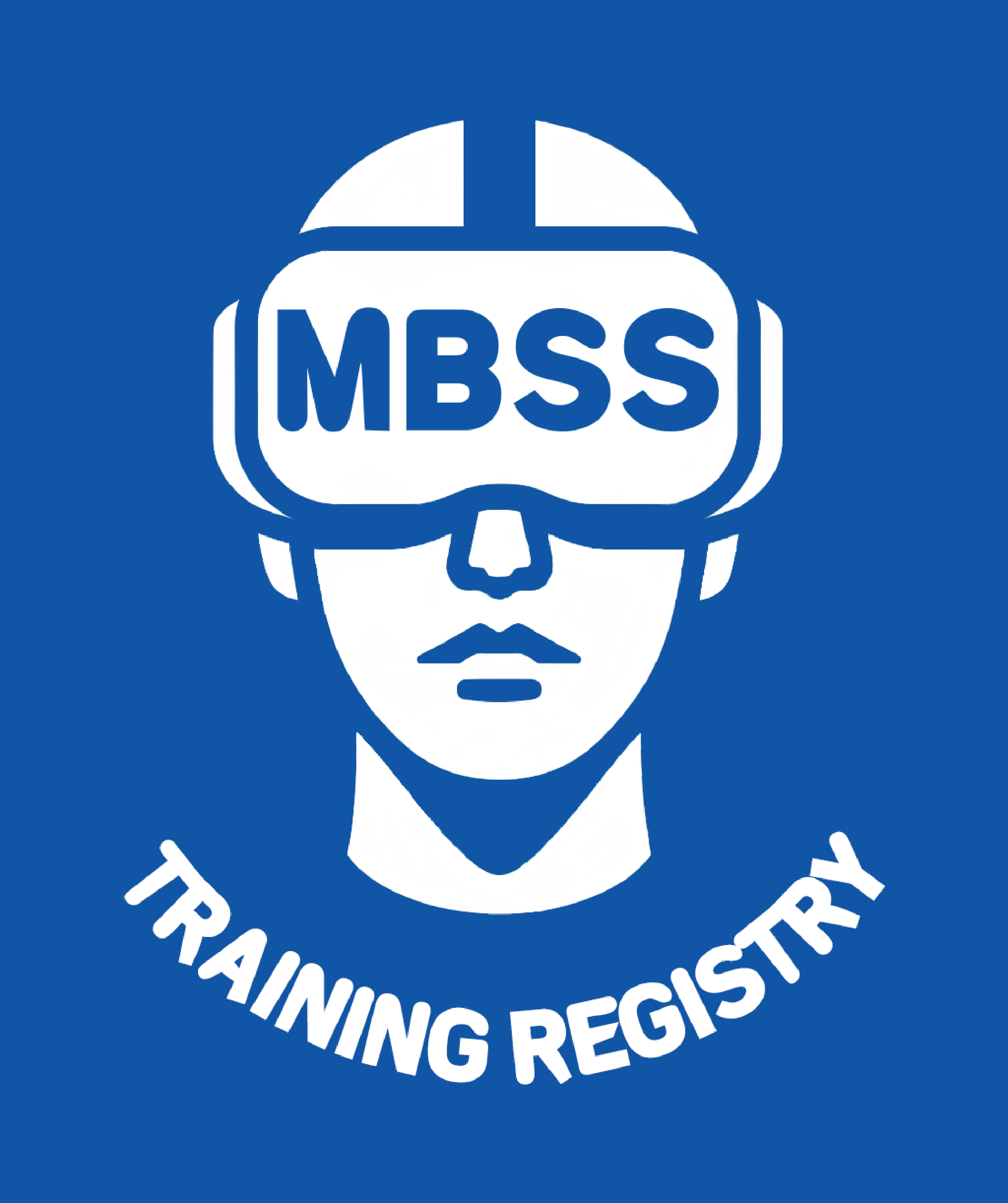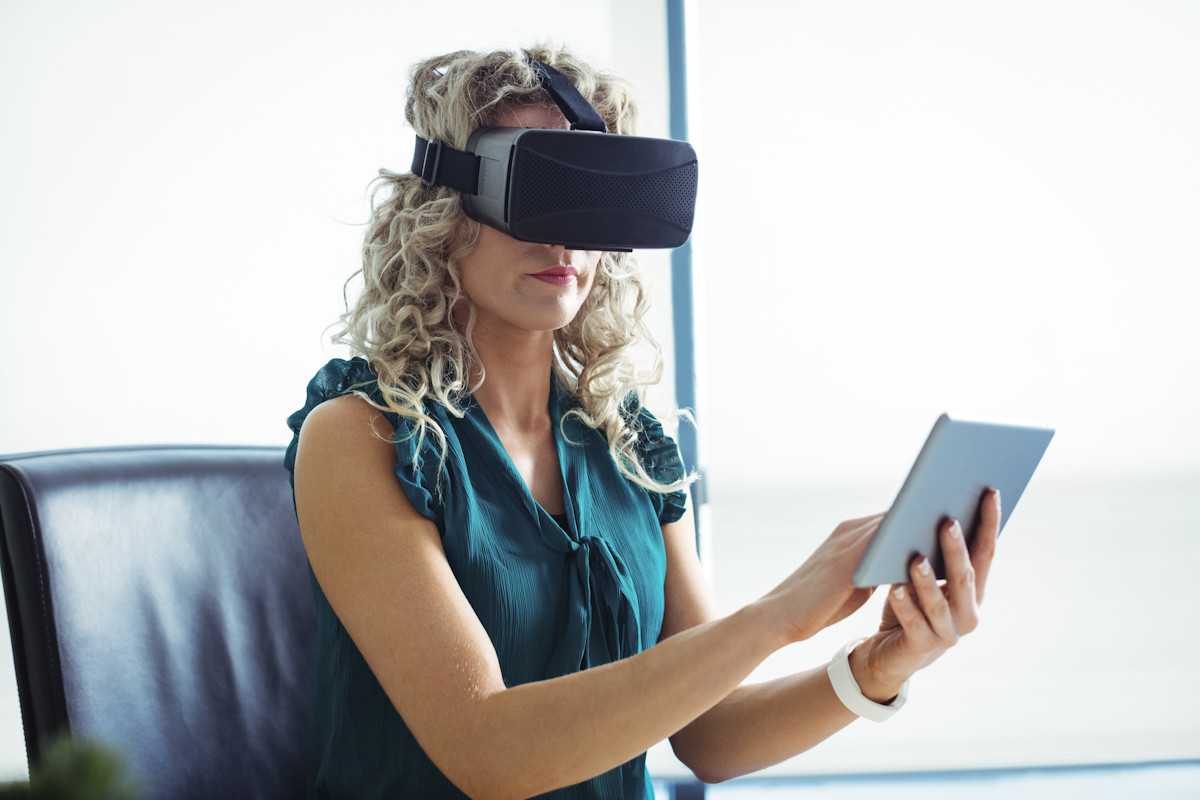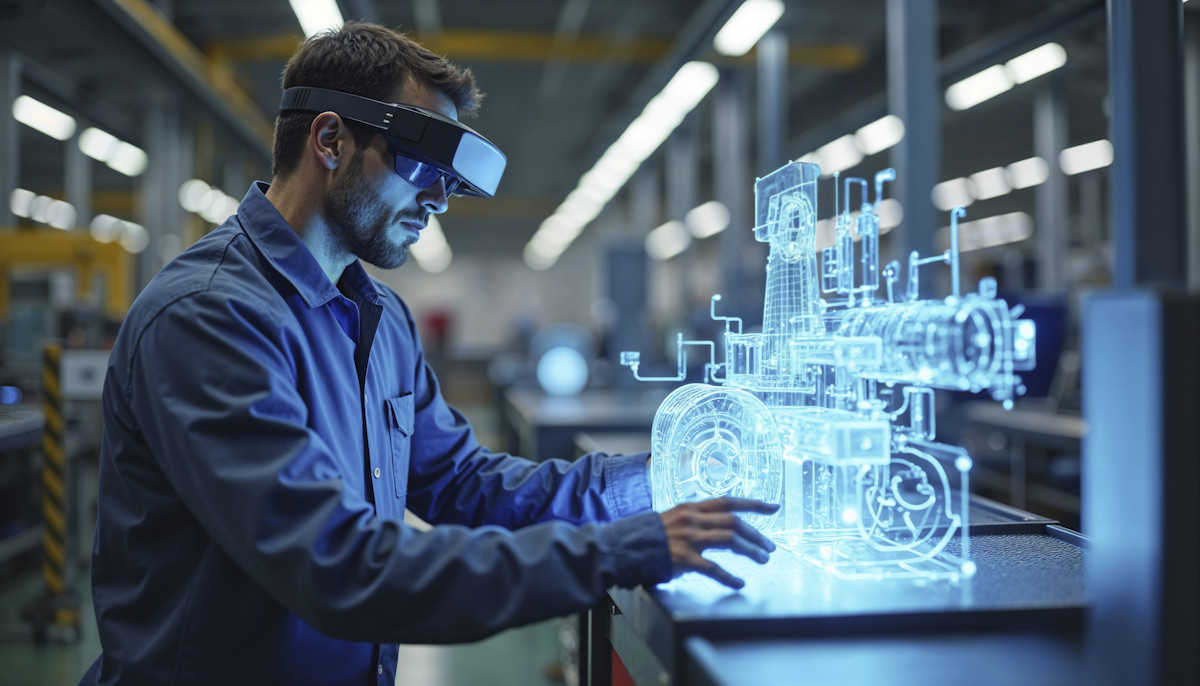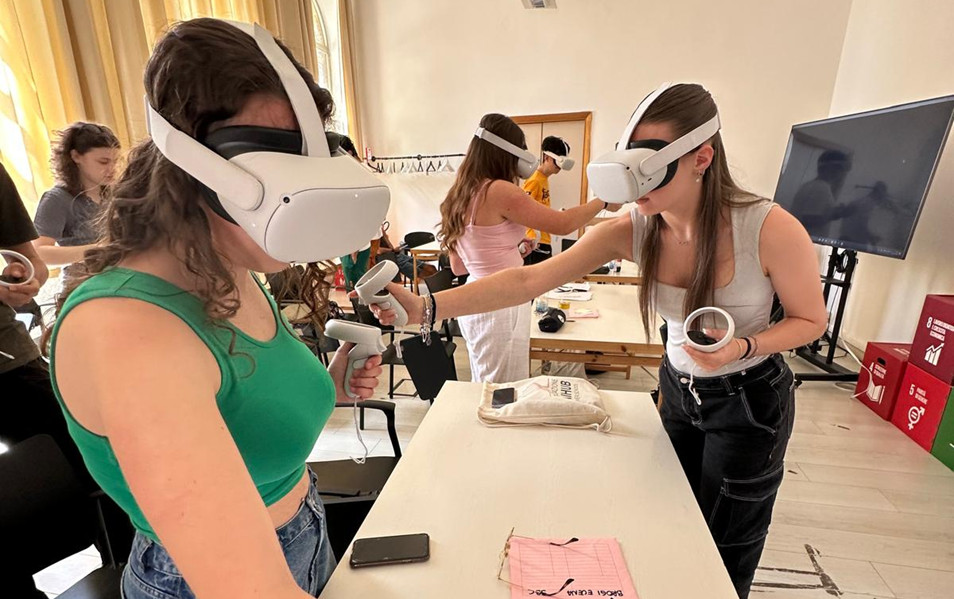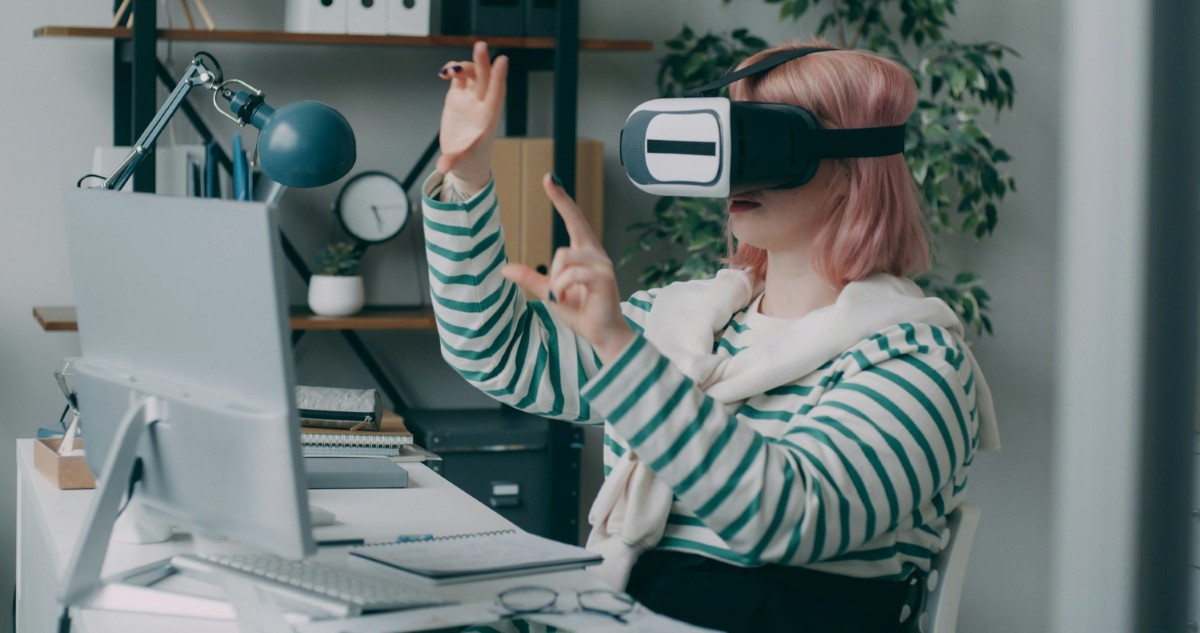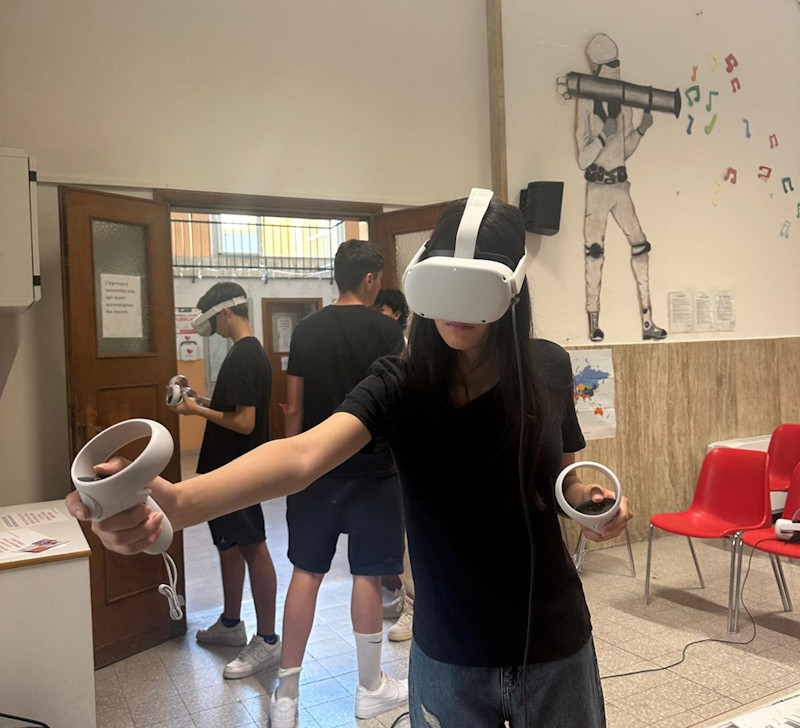The Future of Education Today – Immersion as the Key to Gaining Practical Skills
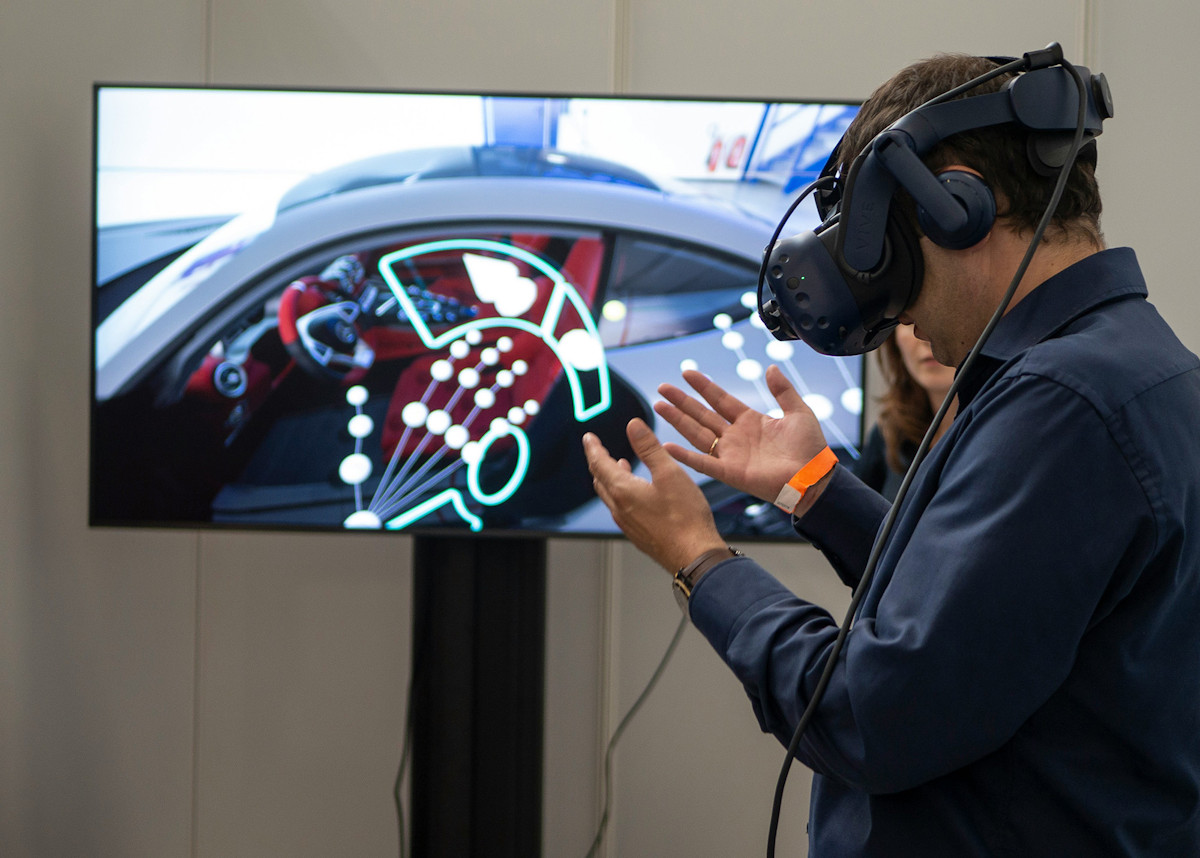
Imagine walking into a virtual lab instead of flipping through textbooks—conducting a chemical reaction without the risk of explosions. Or rather than listening to a lecture about the human heart, you “walk” through its chambers, watching blood flow in real-time. Sounds like science fiction? In June, participants of workshops organized by the Małopolska Regional Development Agency discovered through their own VR headsets that immersive technologies like virtual reality (VR) are revolutionizing educat. A quote from Benjamin Franklin perfectly summarizes our training: “Tell me and I forget. Teach me and I may remember. Involve me and I learn.” These timeless words have taken on a new meaning thanks to the concept of IMMERSION. Unlike passive learning, immersive environments such as virtual reality allow learners to act, experiment, and experience the outcomes of their own decisions—dramatically improving knowledge retention. Education becomes a dynamic process of gaining competencies in a safe, interactive world. IMMERSION IS NOT THE FUTURE OF EDUCATION – IT IS THE PRESENT, RESPONDING TO THE NEEDS OF STUDENTS LIVING IN A DIGITAL WORLD.
What is Immersion and Why is It Transforming Education?
Immersion is more than just new technology—it’s a full engagement of the senses, emotions, and intellect in the learning process. Technologies like VR not only let us acquire knowledge but also experience it. It’s like the difference between reading about cycling and actually riding a bike. VR today offers simulations, real-time collaboration, and instant feedback—making learning more effective and, crucially, more engaging. Skills matter more than memorized facts. Immersive, hands-on learning helps people acquire skills faster and more effectively. It’s not just about theory—it’s about real-world application.
The world is changing rapidly. According to the World Economic Forum’s 2023 report, 85% of the jobs that will exist in 2030 don’t exist yet. Young people must be ready for constant learning and adaptation. Traditional education methods—lectures, textbooks, tests—often can’t keep up. Knowledge learned in school may already be outdated by the time students enter the workforce. Here, virtual reality steps in—not just teaching content but also developing key competencies like critical thinking, teamwork, creativity and digital skills.
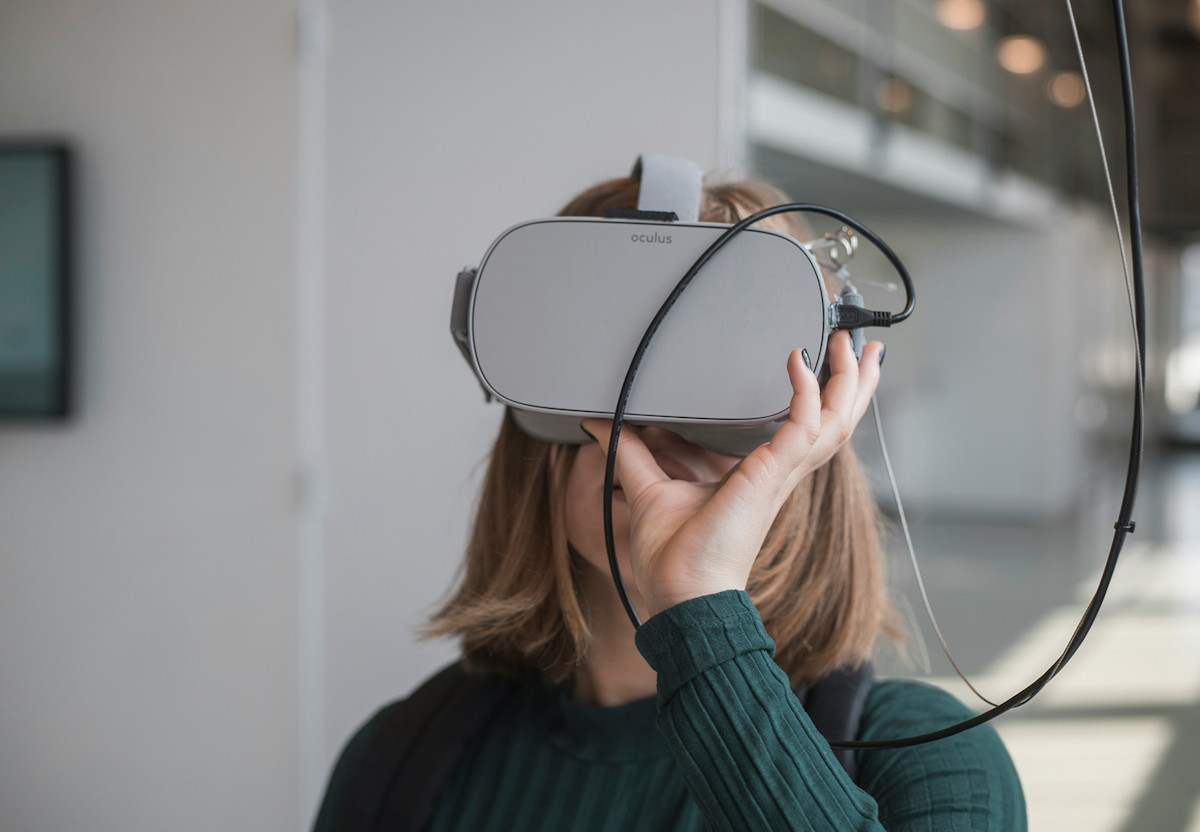
VR is More Than Gaming—It’s a Powerful Educational Tool
Although often associated with gaming, VR’s educational potential is enormous. A 2021 study published in Computers & Education found that learning through VR increases student engagement by 30% and boosts knowledge retention by up to 70%. Why? Because VR lets you “touch” knowledge. Instead of reading about volcanoes, you stand on the crater’s edge. Instead of studying anatomy in a textbook, you explore the human body in 3D.
What’s more, VR doesn’t have to be expensive. Professional systems like Oculus Quest or HTC Vive cost between 1500 and 4000 PLN, but many schools now use affordable options like Google Cardboard (approx. 15 PLN) and other platforms—making the technology increasingly accessible, even in Poland.
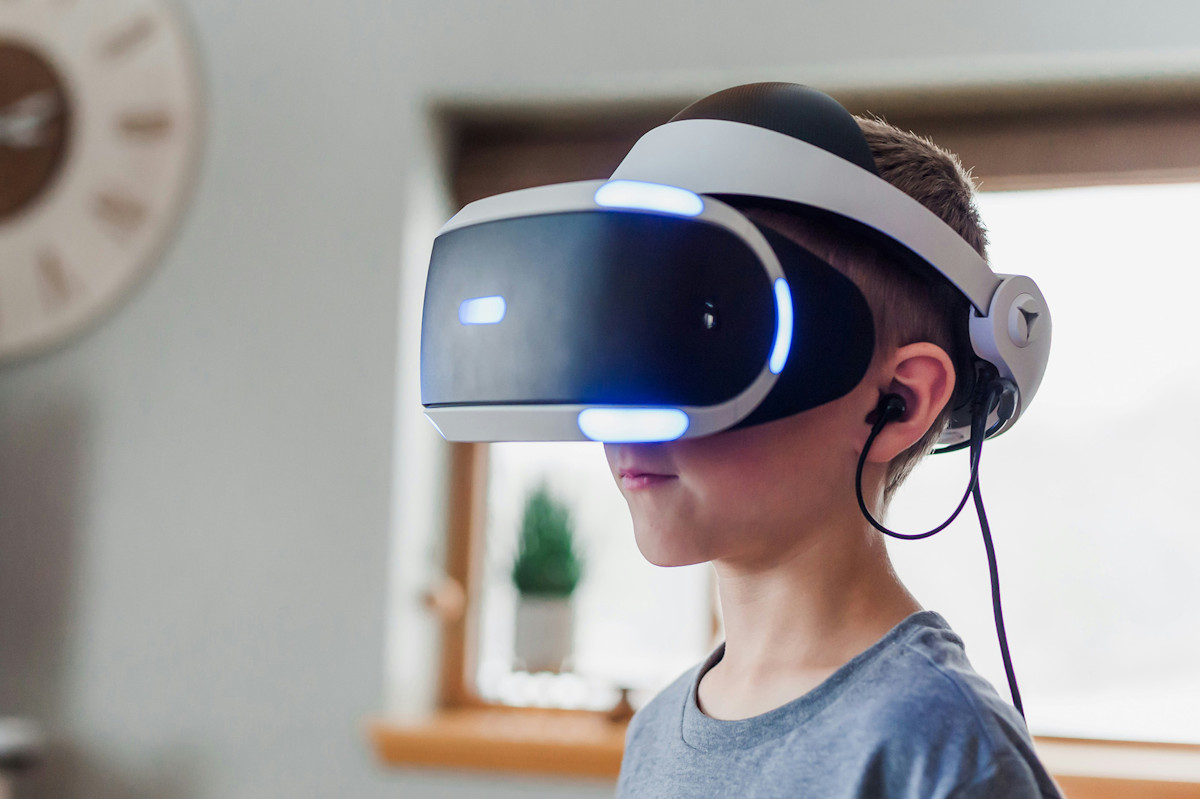
Inspiring Examples from Around the World
1. Try Our Application (Poland)
During our workshops, we used a proprietary, innovative application that we wholeheartedly recommend. It is a modern, intuitive tool that transports users into a virtual world, giving them the opportunity to tackle diverse challenges and problems in a safe digital environment. The greatest strength of the application lies in the fact that it not only engages participants through interactive tasks, but above all helps them develop cooperation, communication, and effective teamwork skills—abilities that are invaluable both professionally and personally. Thanks to its accessible format, the application works equally well in educational workshops and in the context of soft skills development. It is a practical tool that combines learning, fun, and modern technology while also fostering stronger bonds and mutual understanding within a group.
The application can be downloaded free of charge at the following link: https://mbssapp.vccsystem.eu/en/vr-instructions
To be able to use the application, you must have a registered user profile on the website. After logging in to your newly created account, go to the ‘VR’ tab – available in the footer of the page or from your user profile.
2. 3D Anatomy – Stanford Virtual Heart (USA)
At Stanford University, medical students use the “Stanford Virtual Heart” app to enter the human heart and watch it function in real time. This improves understanding of physiology and clinical intuition. Studies show students using VR scored 23% higher in practical tests compared to a control group [Stanford Medicine, 2020].
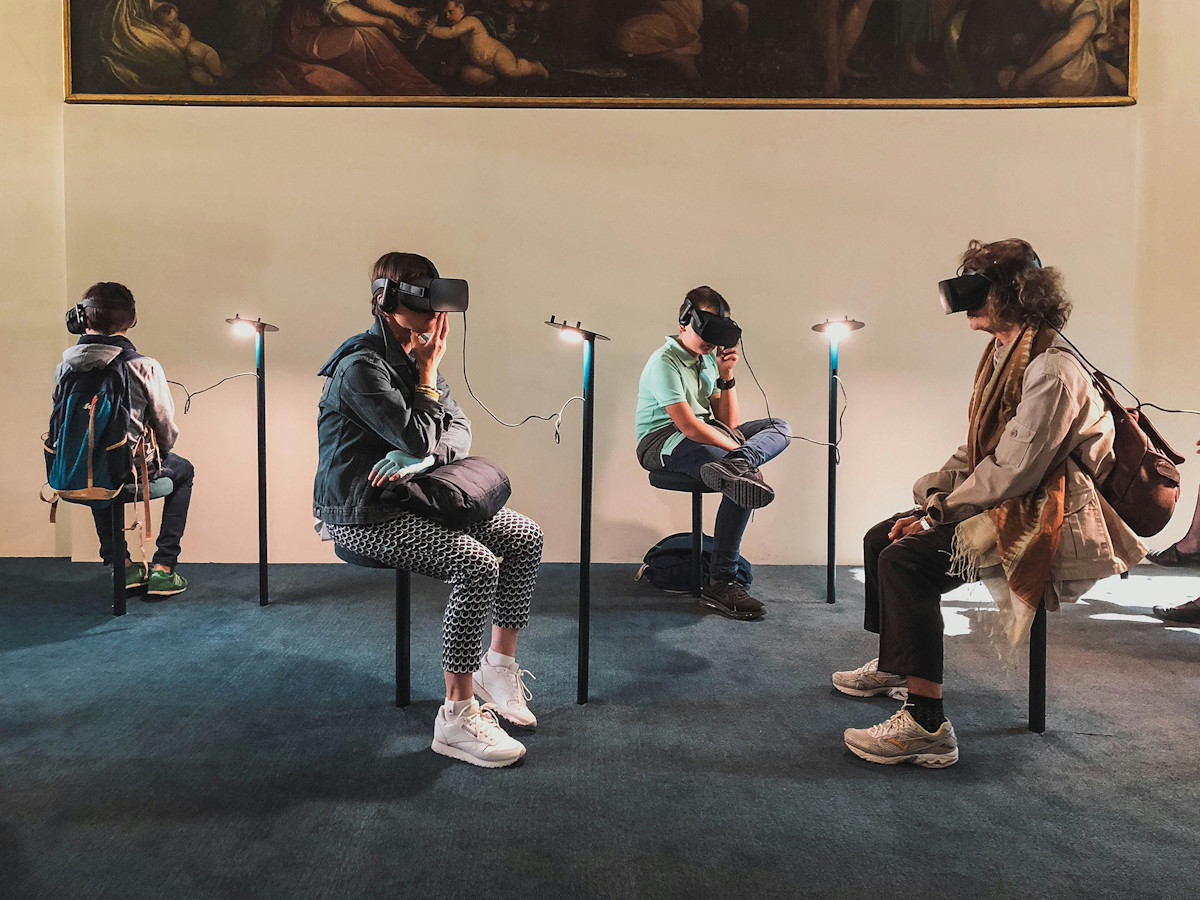
3. Vocational Training Without Risk – (Poland)
Gdańsk is home to one of the world’s most advanced VR/AR welding simulators. Located in the Pomeranian Special Economic Zone, it’s used for vocational training. Students can safely practice underwater welding, metalwork, or tasks in the energy industry—without risk or material costs [Pomorska Specjalna Strefa Ekonomiczna].
4. Rescue Training – Jagiellonian University (Poland)
The Jagiellonian University uses VR to train paramedics. Students simulate mass-casualty incidents, learning to make decisions under pressure and collaborate with emergency services. The program is praised by both students and lecturers as a highly effective supplement to traditional methods [UJ Collegium Medicum, 2022].
5. Virtual Museums – Google Arts & Culture (Global)
Google Arts & Culture offers virtual tours of museums like the Louvre and the Metropolitan Museum of Art. Students can explore 3D art, understand historical context, and even “touch” exhibits. A perfect solution for schools that can’t afford physical field trips [Google Arts & Culture].
6. Speak Like a Pro—in VR! (Global)
Nervous about public speaking? What if you could practice in VR—without stress or judgment, supported by technology? The “Virtual Reality Public Speaking Platform” helps people overcome fear through “overexposure therapy.” Realistic audience sounds, breathing exercises, and multilingual practice—this is how virtual tech, AI, and education combine to empower learners effectively and comfortably.
Future Skills in a Safe Environment
VR is more than flashy visuals—it’s a way to build the skills young people will need in tomorrow’s job market. In immersive environments, students learn teamwork, project management, decision-making under stress, and data analysis. Importantly, they do so in a safe space where mistakes are part of the process, not a failure.
According to the European Commission’s “Digital Skills for Today and Tomorrow” report (2022), 42% of EU citizens still lack basic digital skills. Yet these are essential across nearly every industry—from healthcare to logistics to creative sectors. VR helps close that gap by teaching both tech fluency and adaptability.
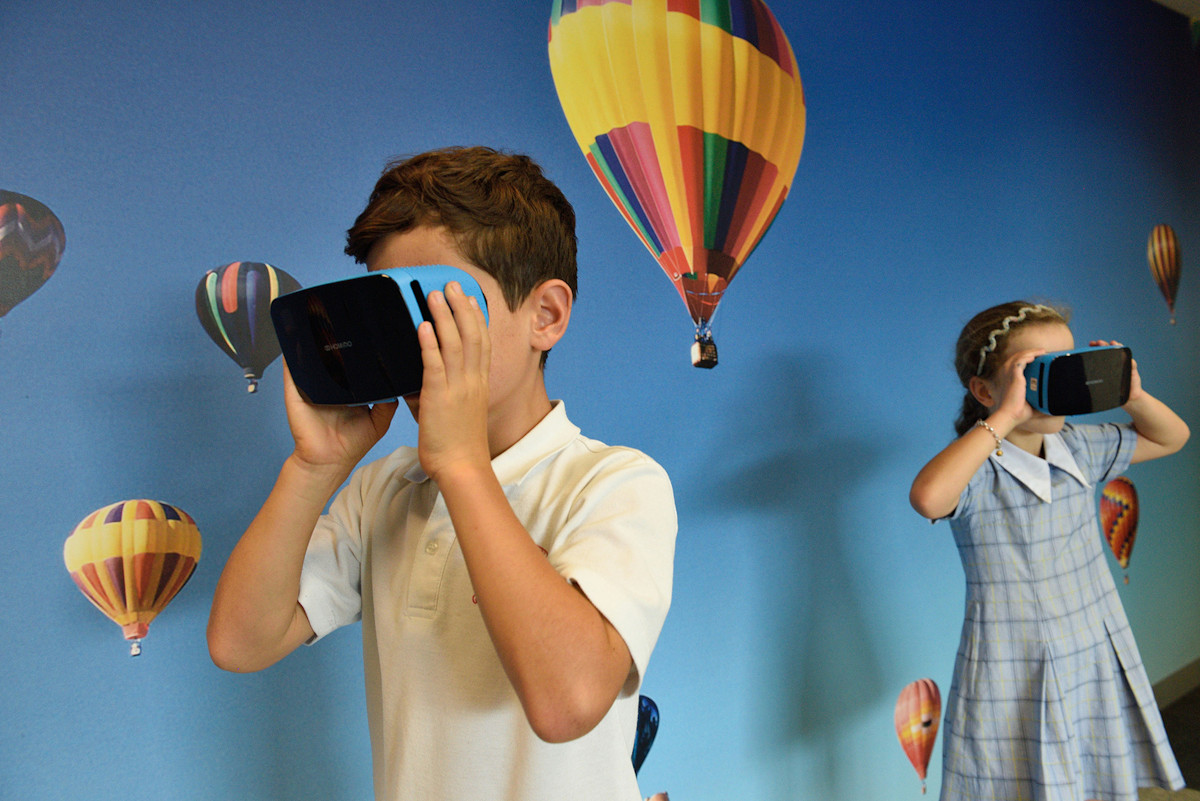
VR Builds Empathy and Connection
Contrary to stereotypes, VR doesn’t isolate—it connects. Platforms like Engage allow learners to collaborate, solve problems, and communicate effectively in teams. Immersive experiences enhance empathy. Studies from Stanford’s Virtual Human Interaction Lab show that VR users who “step into the shoes” of others—like blind individuals or refugees—better understand their perspectives [Stanford VHIL, 2020].
Immersion opens new possibilities. Learners become active participants—experimenting, collaborating, and learning from their own mistakes—in environments that motivate and provide real-time feedback.
Lifelong Learning—The New Normal
In a world where technology evolves faster than we can learn it, lifelong learning is no longer optional. In Poland, many vocational school students train in virtual workshops, practicing welding or operating machinery without risk or cost. These solutions are available anytime, anywhere—making learning more flexible and accessible.
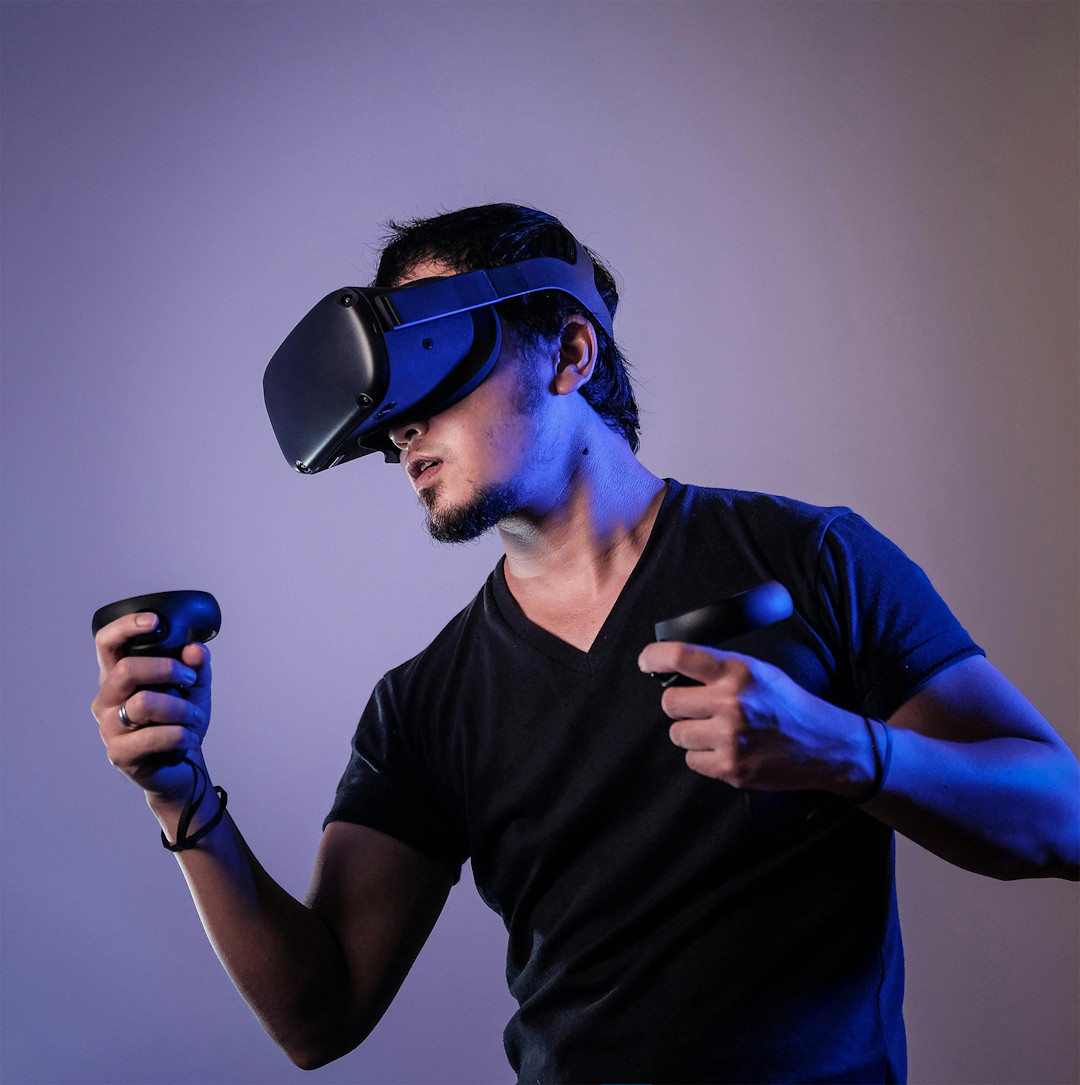
The Future Is Now
At the end of my article, I would like to warmly encourage you to explore the Training Registry for the Modern Business Services (MBS) sector, developed by our team. It is an online database of educational opportunities from Poland, Cyprus, and Italy, offering both on-site and remote formats. The Registry enables participants to acquire skills and qualifications recognized throughout the European Union, in line with the European Qualifications Framework. The Registry was created and funded as part of the international project “Training Registry of the Modern Business Services sector”, co-financed by the European Union under the Erasmus+ programme, based on an agreement with the European Education and Culture Executive Agency (EACEA).
You can access the Registry here: https://mbssapp.vccsystem.eu/en
The future of education isn’t far away—it’s already here. VR bridges the gap between theory and practice, between the classroom and the real world. It develops not just digital skills, but also social, emotional, and creative ones. The question is: how can we use virtual technology to help education keep pace with the digital age? Immersion isn’t just a trend—it’s a shift in how we learn and teach. TIME TO JUMP INTO THE VIRTUAL WORLD AND DISCOVER HOW MUCH WE CAN GAIN.
Sources:
- World Economic Forum (2023). Future of Jobs Report. https://www.weforum.org/publications/the-future-of-jobs-report-2023
- European Commission (2022). Digital Skills for Today and Tomorrow. https://digital-strategy.ec.europa.eu/en/policies/digital-skills
- Computers & Education Journal (2021). The effects of virtual reality on learning motivation and performance. https://www.sciencedirect.com/journal/computers-and-education
- Stanford University Virtual Human Interaction Lab (2020). Empathy and VR: A review of experimental findings. https://vhil.stanford.edu
- Avantis Education (2021). ClassVR: Case Studies. https://www.classvr.com/case-studies/
- Jagiellonian University Collegium Medicum (2022). VR Simulations in Paramedic Training. https://cm-uj.krakow.pl
- Google Arts & Culture (2023). Virtual Museum Tours. https://artsandculture.google.com
